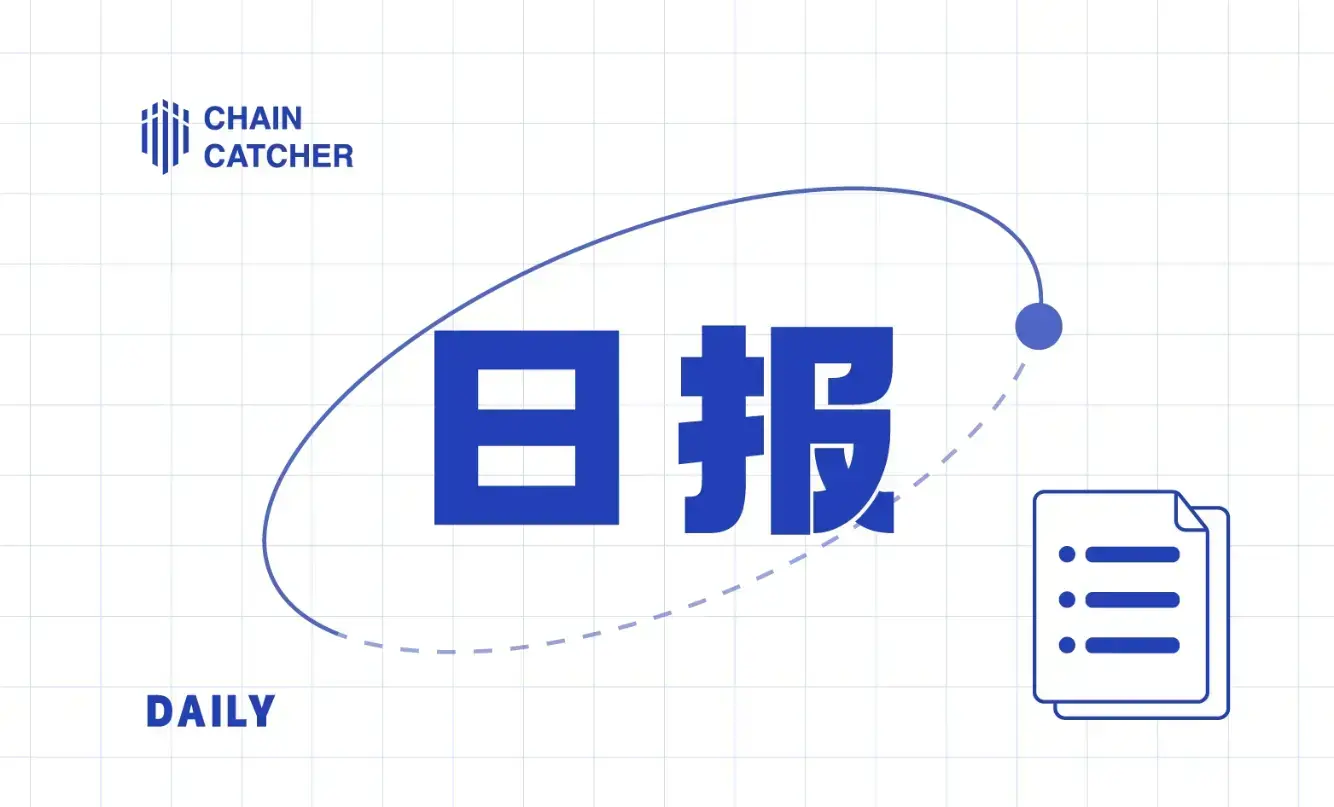After raising $6.7 million in funding, Corn immediately launched an airdrop program. How to participate?
Author: Lyric, ChainCatcher
Editor: Nianqing, ChainCatcher
This year, no one wants to miss out on the BTC ecosystem.
WBTC, as the primary Wrapped Bitcoin, is an important bridge between the Bitcoin and Ethereum ecosystems, and has recently been controversial due to changes in custody.
Coinbase has announced that it will launch a token called cbBTC, and Base protocol head Jesse Pollak added, "I love Bitcoin and am very grateful for its pioneering role in the cryptocurrency space. We will build a massive Bitcoin economy on @base."
Bringing BTC into the Ethereum ecosystem is not the only solution. Corn is a new Ethereum Layer 2 network that uses hybrid tokenized Bitcoin ($BTCN) as gas and redirects network revenue back to users and protocols.
Recently, Corn completed a $6.7 million funding round led by Polychain Capital, attracting numerous investors in its seed round, including Binance Labs, Framework Ventures, ABCDE, Symbolic Capital, HTX Ventures, and Relayer Capital. Additionally, well-known project developers such as Sandeep Nailwal, Smokey, and Papa Bear (Berachain) also participated in the investment personally.

The founder of Corn has stated that there is an increasing amount of activity and action surrounding Bitcoin DeFi. The ETH community has long had an atmosphere of "I love BTC, but I won't say it out loud." This situation has changed, and builders hope to tap into that multi-trillion-dollar net new capital.
What is Corn?
Corn claims to be "the first Ethereum L2 that uses $BTC as a gas token." It uses $BTCN as hybrid tokenized Bitcoin. $BTCN is backed by native $BTC at a 1:1 ratio and is not constrained by a single centralized custodian or cross-chain solution.
Team Background
The Corn team was founded by a group that has long been engaged in DeFi development, having launched projects such as Badger, Code4rena, Slingshot, and 0xBow. Founder Chris Spadafora is also the founder of BadgerDAO and previously founded Alwayshodl and North Block; co-founder Zachary Cole is the managing partner of Number Group and was previously the co-founder and CTO of Slingshot and a co-founder of Code4rena.
How Does Corn Work?
- Ecosystem Composition and Operation:
Corn, as a new Ethereum L2 network, uses its hybrid tokenized "Bitcoin" (BCTN) as a gas token. The operational model of Corn is inspired by the veTokenomics pioneered by Curve Finance. (veTokenomics requires users to voluntarily lock their tokens in exchange for governance rights and a share of protocol revenue, and veTokens are tokens that holders voluntarily lock for a period to gain the right to participate in protocol governance. Typically, these tokens are non-transferable and usually come with additional benefits besides governance rights.)
(An example of veTokenomics is shown below)

Thus, in Corn, users and developers are incentivized through the issuance of CORN. CORN can be directed to any application on the chain. Staking CORN can yield popCORN, and the amount of popCORN may determine the governance weight of CORN stakers. CORN stakers can decide what proportion of CORN is issued to which applications, and users interacting with the applications favored by stakers will receive these incentives. Additionally, CORN stakers can earn rewards through Corn's native Bribe market—by allowing CORN stakers to directly accept offers from applications, automating liquidity provision within the Corn network.
In the Corn network, Corn yield consists of two tokens:
$BTCN (tokenized BTC; with a 1:1 ratio to BTC) ------ generated through network transaction fees
$CORN ------ issued by the native network
CORN stakers decide the direction of the yield.
CORN stakers can earn from Corn's native Bribe market. This permissionless market allows anyone to incentivize $CORN stakers with tokens to gain their voting power for direct revenue from a specific protocol or program.
In simple terms, $CORN stakers can stake $CORN to earn popCORN, which represents voting power. Others can "bribe" $CORN stakers with tokens to gain the voting rights held by the stakers. Of course, the program that emerges from the voting is the "winner," and users interacting with the "winner" will receive rewards for that round. Corn aims to attract more builders by allowing stakers to decide "which program is the 'winner'" and "who can receive the rewards of the 'winner.'"
- Corn "Crop Circles": Get $CORN -> Stake to generate and earn $popCORN -> Control yield

- BTCN: A Hybrid Tokenized Bitcoin
BTCN is the first hybrid tokenized Bitcoin and will serve as Corn's gas token.
Corn developers believe that Bitcoin in DeFi should not be entirely centralized or decentralized but should adopt a hybrid approach that prioritizes solvency and scalability.
BTCN is a tokenized Bitcoin supported 1:1 by native Bitcoin through some technical mapping of $BTC. It is not constrained by a single centralized custodian or bridging solution but extends its minting rights to include multiple custodians, smart contracts, and/or bridging protocols.

Minting Rights of BTCN:
- Smart contracts can obtain minting rights (similar to DAI);
- The most reputable and trusted counterparties can obtain minting rights.
BTCN will unlock new use cases and higher capital efficiency in AMM, swap facilities, and lending markets, which is a major demand driver for Bitcoin in DeFi.
Corn Airdrop Plan
In the first phase of the airdrop, Corn introduces points called Kernels. Kernels will represent how much $CORN can be earned from the airdrop after the Corn mainnet goes live.
Corn has issued retroactive reward points Kernels to eligible users (those who interacted with one or more partner applications starting last year). New users can also earn Kernels points by depositing various assets, completing Galxe tasks, or inviting and referring new users.
1. Initial (Retroactive) Airdrop (for early DeFi users who collaborated)
The list of users eligible to earn Kernels includes DeFi users who interacted with certain protocols of Corn within the specified time.
The airdrop snapshot time is: July 13, 2024, at 4:20 (Beijing time), covering over 1 million addresses.
Eligibility requirements are as follows:
EVM-related operations:
- Maker/Spark Protocol: Held at least 0.01 sDAI for three months or longer within the year before July 12, 2024, or borrowed against WBTC on Spark;
- Arbitrum: Users who bridged mainnet Ethereum to Arbitrum using the official bridge within the year before July 12, 2024;
- Ethena: Users who held USDe and staked SUSDe for a year before July 12, 2024;
- fi: Users who held at least 0.01 eETH or weETH for two months or more within the six months before July 12, 2024;
- Kelp: Users who held rsETH (snapshot from Arbitrum and Ethereum) for the past three months or were among the top 500 liquidity providers;
- Pendle: Users who traded on Pendle or provided liquidity with Silo-related assets within the year before July 12, 2024, or staked PENDLE as vePENDLE; (related Silo assets include: sDAI, USDe, SUSDe, eETH, weETH, and rsETH)
- Galxe: Users who have staked at least 300 GAL since the launch of Galxe;
- Spark: Users who have borrowed against WBTC;
- wBTC: Users who held at least 1 wBTC within the year before July 12, 2024.
Bitcoin-related operations:
- Babylon------Users who participated in the Babylon staking testnets Testnet-3 and Testnet-4;
- Thorchain------Users who swapped at least $100 of native BTC or provided liquidity on Thorchain in the year before the snapshot.
2. Earn points through Galxe tasks to receive airdrop
Corn's partner Galxe will distribute Corn's native points Kernels to users who spread information about Corn on Discord, X, Telegram, or via email through Galxe Quests before the live launch event.
The ratio of Galxe points to Corn network's native points (Kernel) is: 1:1.
Galxe offers two Galaxy tasks, which can be completed step by step to gradually earn Points.

Users can also earn Kernels by depositing specific assets into Corn.
3. Earn airdrop through deposits
Connecting wallets must meet the eligibility for the initial airdrop mentioned earlier; if the wallet does not meet the initial airdrop eligibility criteria, an invitation code will be required to make a deposit.
Currently, the official supports deposits of seven tokens: wBTC, wETH, rsETH, USDC, DAI, sDAI, USDe.
Additionally, certain token deposit silos (Silo, referring to a funding pool here) can earn extra Kernel rewards, as follows:
- BTCN silo (×2 times) (if WBTC is deposited, it will be converted to BTCN)
- weETH silo (×25 times)
- sDAI silo (×25 times)
The Kernel points rule is: Users earn 1 Kernel for every $1 deposited (every 210 minutes), and all deposited assets can be withdrawn at any time without any penalties or fees.
4. Referral Program
Eligible users can generate a one-time invitation code for friends. They can earn Kernels based on their own deposits as well as based on the deposits of the invited users. Kernel points will continue to accumulate during the Kernel Airdrop event.
According to the official website, Corn is about to launch the second phase of the airdrop, transitioning from Kernel points to $CORN.










